Raph Koster is a veteran game designer and creative executive who has worked at EA, Sony, and Disney as well as run his own company. The lead designer and director of massive titles such as Ultima Online and Star Wars Galaxies, he’s also contributed writing, art, music, and programming to many other titles. He is the author of the classic book A Theory of Fun for Game Design. In 2012, he was named an Online Game Legend at the Game Developers Conference Online.
The content below is an excerpt from his book Postmortems, published in June 2018 and now available on Amazon and other retailers.

This is adapted from a speech given in Spanish entitled “Una carrera,” delivered at GameDay Peru in early 2015.
I was given the Online Game Legend award at GDC Online in 2010. The citation read in part,
Raph Koster has led a prolific career. As the lead designer on Ultima Online and the creative director on Star Wars Galaxies, his contributions helped lay the foundation for the many massively multiplayer games that followed. Koster's professional credits span nearly every facet of game development, including writing, art, soundtrack music, programming and design.
Raph Koster is considered a thought leader, as a frequent lecturer and published author on topics of game design, community management, storytelling and ethics in game development. His A Theory of Fun, published in 2004, is considered seminal by educators and members of the art game movement, as well as being one of the most popular books ever written about games…
I worry that people look at a career and see only this: the jobs, successes, awards and invitations to give talks.
But that’s not how life is, and that’s not what I feel like inside.
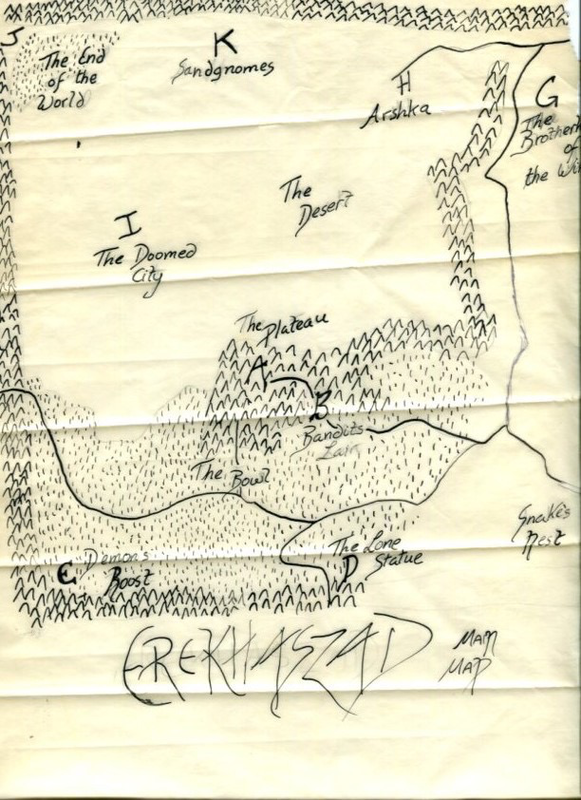
Upon hearing about the award, my mother asked me for a favor. “Please,” she told me, “mention that you are Latino. People don’t know, and you have a duty to encourage kids with dreams.”
I lived in Lima, Peru, as a boy. Videogames were not common. Oh, I had played them in the States before arriving in Peru in 1979, and I continued to see them there when I went back to spend summers with my dad. My dad also sent me a copy of Dungeons & Dragons, the red box Basic set, as a birthday present.
I already read like crazy: a book a day, usually science fiction or fantasy or murder mysteries. And I don’t mean just Hardy Boys or kids’ books — those, yes, but also Theodore Sturgeon and Isaac Asimov and Robert Ludlum. I was indiscriminate.
Of course, I started to create worlds, to draw little maps.
Thus began my course of study: I wanted to play those videogames that weren’t making it to Peru. Pengo and Q*Bert and others weren’t in the list of the ten or so games within a few miles of where I lived. In fact, there were so few that I can still recite the list of what was available: Spider
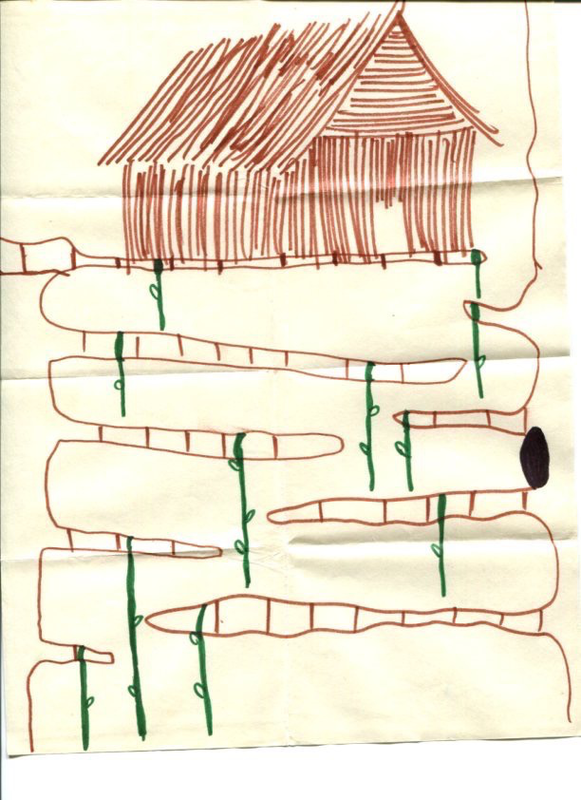
at the rotisserie chicken place; Asteroids, Gorf, Berzerk, and Star Castle at the mall. On the bus we played the Game & Watch series — the dual screen Donkey Kong and Donald & Mickey. I had a Casio game watch, the one with the falling triangle blocks where you had to make a pyramid.
With the help of videogame magazines, I made board game versions of the videogames I didn’t have access to.
Porting a digital game to the world of tabletop play taught me the most basic thing: that games can manifest in many ways. Pengo could be decomposed into turn-based strategy. AI could be mimicked with dice or simple rules.
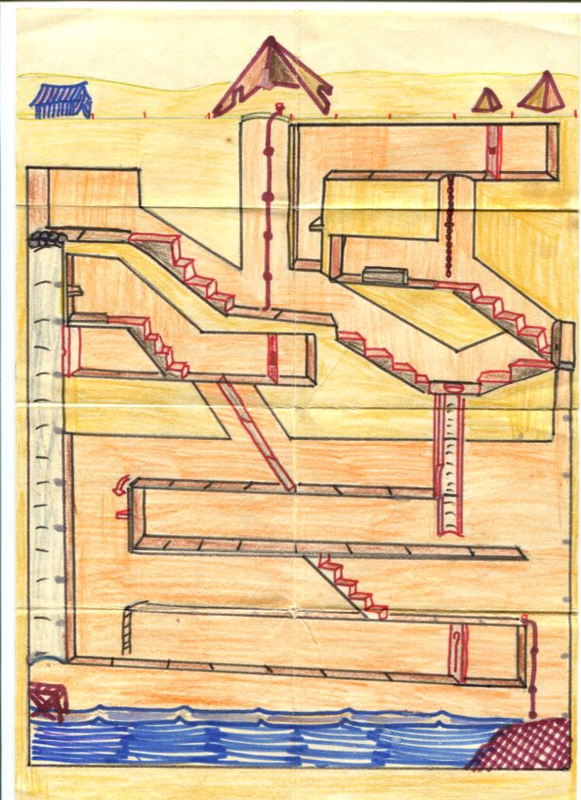
I started out like any other apprentice in the arts, by copying things. On my first original game, one called Jungle Climb, I basically took the ideas from the various Donkey Kong games, and drew a crude vertical platformer board. You moved a space at a time, and dodged just like you did on the LCD Game & Watch games… which was pretty dull pretty quickly, in a tabletop setting.
I then started to challenge myself on the visual front; Egyptian Graverobber required you to play against another player who controlled all the “AI” monsters, and try to get down to grab all the treasures and then escape. It still used basically the same mechanics.
It took several games, but eventually I took on the challenge of actually trying to create something with rules of my own invention. Based in part on the massive Gary Jennings novel Aztec (a decidedly mature read for someone who was probably thirteen at the time), The Hunt for the Treasure of Quetzalcoatl, spanned a dozen tall thin boards, with countless enemies, a randomized event generator from shuffled event decks, and a randomized quest order based on drawing cards from a separate deck. It took hours to play, and supported a bunch of kids all playing different creatures and monsters.
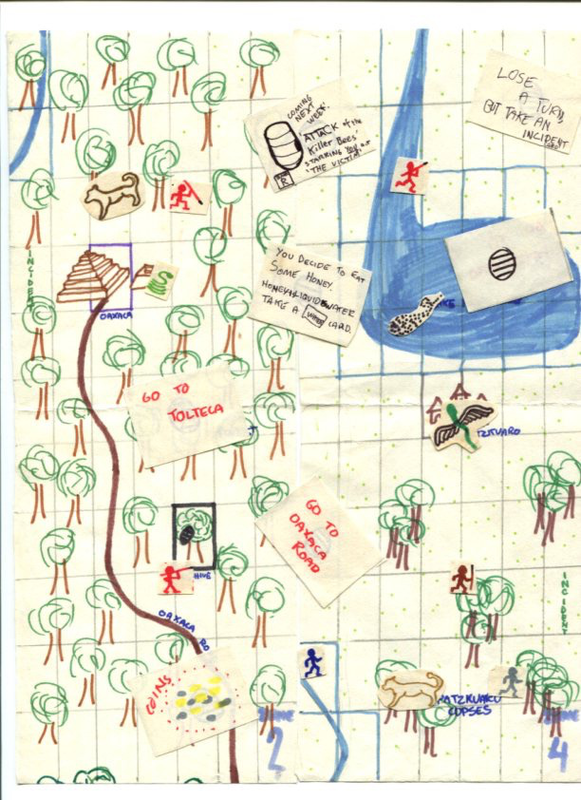
I look back on it now, and with hindsight, I say to myself “wow, it’s almost as if I knew at age 12 that I was going to be a game designer as an adult.” But that’s a lie. I thought I was going to be a writer or teacher, you see. Everyone in my family had always told me so.
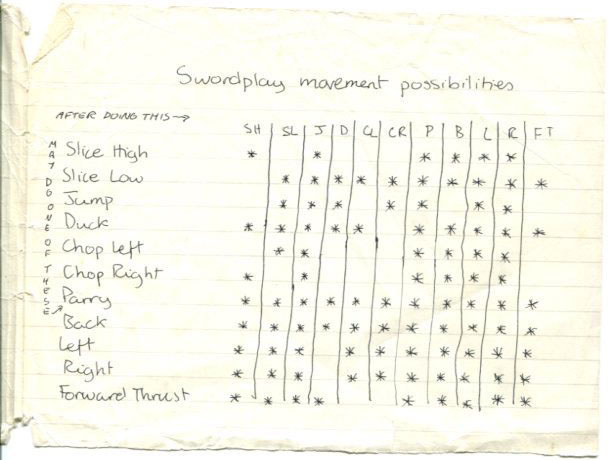
I started to do things like take existing games and do revamped versions, to try to improve them. One in particular was a remake of TSR’s Dungeon! I’m really not sure that my take was any better, but there it was. I rather quickly found to my dismay that my previous games had mostly just been about level design, map design, incident decks and movement rules. There was a whole new world at work in more sophisticated games — there was math, and statistics behind everything, stuff I just didn’t understand.
My try at a state-machine game based on sword fighting, creatively entitled Swordplay, was a miserable failure because just about everything led everywhere. I soon discovered the issue of “degenerate strategies” without knowing the term.
This basically led me to the library. I didn’t think I was “studying.” For me, reading up on this stuff was just part of the game of making games. By the time I hit high school I was researching ship-to-ship combat for a game called Legal Pirates, which was actually what I turned in for a class assignment in history class. It came with an annotated bibliography; as it happens, this was not the last time I had a bibliography for a game design, even though it was never required of me again.
It was around when I was thirteen that I discovered that computers would actually let me make my own games. Oh, I had started playing with a Pong home console well before moving to Peru, and we had an Atari 2600 with quite a bunch of cartridges. But it was clear, from reading Video Games and Electronic Games and Compute! and Creative Computing that computer gaming was where the real action was. I started learning some MS-BASIC on my dad’s CP/M-based Osborne 1, hacking Colossal Cave and playing ASCII versions of Pac-Man and Wari.
I begged and begged, and my great-uncle got me a 16K Atari 8-bit computer. I don’t have that one anymore, because I upgraded three times before I was 16, ending up with the 130XE. I still have it, along with my collection of games on floppy disks.
And so I threw myself into trying to create games again, just in a new medium.
My friends and I took ourselves very seriously. We actually called ourselves a company, and we put a copyright symbol by the company name (which is legally nonsensical, of course).
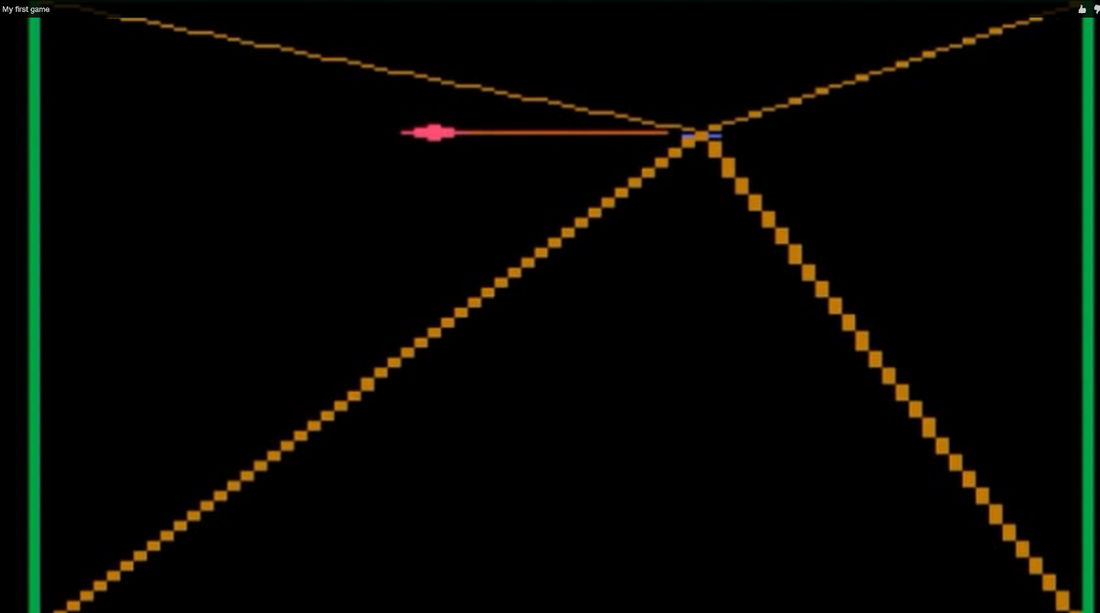
It took a few tries, but I made a game called Orion. And it was actually fun. It was imitative, for sure, featuring light cycles and spaceships. It consisted of linked games, so you could keep score of who won in each of the challenges. You can actually trace the progression of my programming skill over the course of the games; the first one was the light cycles; the second, I could move ships vertically but not freely; the third had free movement but not independent shots; and so on. I even had the brainstorm to bring in the kids’ game of Capture the Flag into video game form.
After five linked games, I felt like I was a game developer. I wrote a second one, a pretty terrible one where you flew around over a moonscape and shot down aliens before they reached the ground, while dodging explosive satellites. We managed to sell a copy of that one to a friend, in a Ziploc baggie.
But then I stopped.
I finished high school.
I went to college.
I thought I would go be that writer, teacher, artist.
I studied poetry, and music, and art, but this time “for real.” I even got an MFA in poetry.
A sheepskin doesn’t make a poet, it turns out.
While in college, I ran a play-by-email roleplay campaign, but otherwise didn’t really do much with game development. Macintosh computers were everywhere on campus—I was out of touch with programming and found the complexities of working with the newfangled graphical interfaces impenetrable. I could help fellow students with their Pascal homework, but I couldn’t put a sprite on screen. I could max out the campus high score in Crystal Quest, but I couldn’t make so much as a text adventure. My roleplay campaign was presented at a conference on academic computing by the head of the computer program, but all my creative energies went to writing.
I got pretty unhappy in grad school. There were academic politics. The writing that was in vogue felt utterly disconnected from most people’s lived experiences to me, a sort of hermetic and self-referential body of work infatuated with other academic writers. I recall huge arguments over whether Stephen King was more important a writer than whoever we happened to be studying that week. I am pretty sure I was proven right by time.
But the Internet was starting to boom. To stay in touch with friends, we started using email. And after email, a friend pointed out that there were these crazy games, reminiscent of the D&D campaigns I had run as a kid, but run over the Internet. They were called MUDs.
MUDs were text-based virtual realities, but I didn’t know that yet. I started out playing them, then in less than a year, making them. I could use the writing skills I had acquired for doing MUD development.
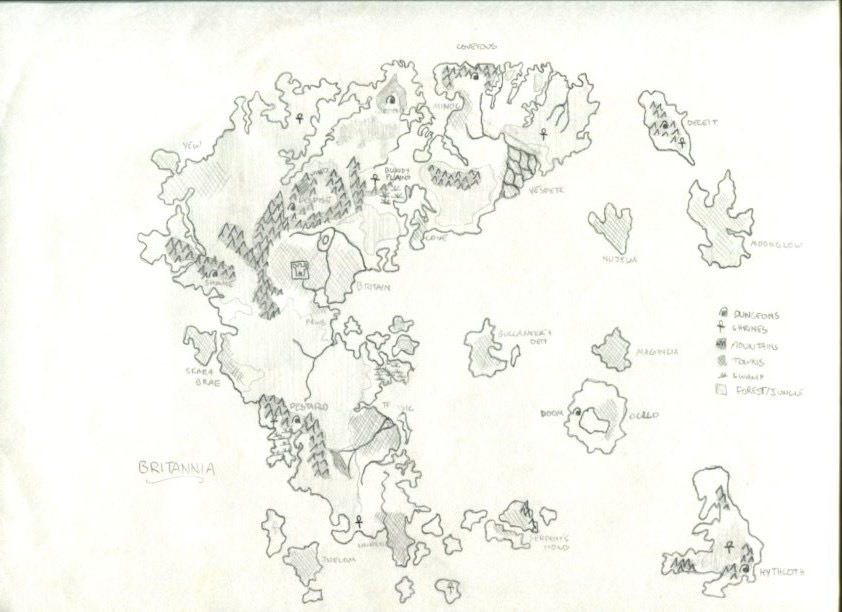
And MUDs were communities. Managing them, I had to study politics and sociology. The result was that the industry knocked at my door.
And so I got lucky, helping lead Ultima Online, by the time I was 25.
I say luck, and it was indeed luck. But it also happened because we dreamt of fantastic worlds and the future of cyberspace. That wasn’t something that we were equipped to build, but we tried anyway.
Even on a giant project like that, I still found myself drawing little maps with pencil. They don’t look that different from the ones from grade school, if I am honest with myself. In some ways, it feels like I ran to stand still.
And as I ran, I ran with more ambition, because you have to challenge yourself, you have to beat the boss. By the time I did Star Wars Galaxies, I was inventing new technology around procedural generation techniques, to do something that wasn’t quite possible: ship a 4 gigabyte game on a CD. I was teaching myself all the disciplines of all my colleagues, so I could do things like do all of the interface design for the game. I finally understood those mathematics behind everything, and now I was trying to turn them into magic, to allow other people to live improbable lives in impossible places.
I came to see games as gifts.
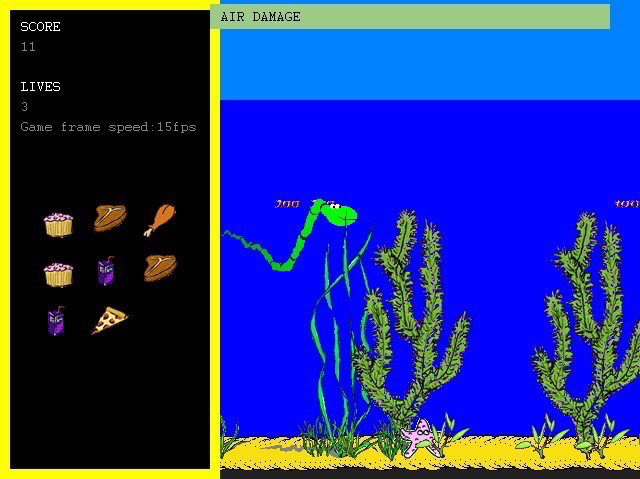
I have a daughter. She lives with Type I diabetes. When she was young, I made a videogame for her called Watersnake. The snake lives under the water, and the landscape scrolls by, all starfish with cute eyes and seaweed. The snake is always drifting down. If it hits the bottom, well, that’s a seizure and coma and possible death from a hypoglycemic event. If it goes up too high, it pokes above the water where it can’t breathe, and suffers slow damage that can never be healed, equivalent to the slow damage caused by constant high blood sugars, the slow neuropathies and circulatory damage that occurs.
You have to toss food to the snake — cupcakes, steaks, pizza, fried chicken, juice boxes — kids’ foods, things that she would want to eat herself. And you do it in order to pick up prizes under the water. Each food uses the real world glycemic index of that food to cause the snake to swim upwards, and them slowly come down. Fast carbohydrates cause the snake to shoot up to the surface and possibly the sky; slower proteins and fats cause gentle arcs.
Watersnake was a gift to my daughter.
I have a mother. She always worries that I will forget the cultures from which I sprang, my heritage. I made a game called Andean Bird, one of the very first “art games,” for her. In it you fly over the littoral islands off the coast of Peru, in the form of a sea bird of some sort. You fly, and you experience the wind and the sunrise and the sunset, and you listen to music and you flap your wings and read a small poem about the ways in which our memories of cultures and heritages erode.
Andean Bird was a gift to my mother.
I realize now that games themselves have been my teachers, all this time. There came a moment when I realized it was my turn to teach. After all, you take turns in games. The result was a book called A Theory of Fun for Game Design, where I tried to share back what I had learned by ranging widely over other fields. My tools for making abstruse topics easy to swallow were the same little cartoons that I drew when I was twelve.
But now, of course, I take it all so so seriously. I have a tall shelf reserved just for books that are about games, for for fields that impinge directly on the sorts of games I make. Books about hypertext, books about virtual law. Books about industry history, and books about cultural anthropology. Books about the way in which virtualizing our world provides opportunities for constant surveillance, and books about how societies find ways out of pickles like that. Books about chance, and books about economics and books about cognition, and yes, still books about poetry.
Because games deserve to be taken seriously, and players deserve to be taken seriously, and most of the worst mistakes I have made over my career, the worst game design mistakes, have happened because I failed to do that.
Ultimately, what I do deserves to be taken seriously.
So I set out to help the world create their own games, without having to go through that study process. I created a platform called Metaplace which was intended to democratize the creation of online worlds, so that we could get back the creative explosion of them that had existed in the days before World of Warcraft. Spoiler: it didn’t work. But working to create tools was yet another new design challenge, another new way to look at the problem.
Even though the platform didn’t do what we hoped, people still made amazing things. Many of our best users are developers in the industry now, some of them on award-winning titles. The platform hosted a President speaking by video, arcade games and Nordic myth and lectures and parties and games about 9/11 and games about fuzzballs.
In the end, though, you really can’t skip past the learning, I think. Those who seem to—say, lucky ones who lead a major title when they are 23—do so because they are learning in public, running forward like mad, because it is their passion. It’s their art.
Yes, I said “art.”
The world has changed a lot since I started. Now everyone plays games. I’ve made some for that “everyone,” like Island Life, My Vineyard, and Jackpot Trivia.
There is also now a bit of a science to making games; more is understood about verbs and loops and arcs and grammars, and I helped that to happen.
There are even classes inside virtual worlds, and you can go to a games program and learn how to make games from an actual teacher.
And if you want to get creative with games, you don’t have to know how to make them yourself anymore. The games themselves are canvases and brushes, tools of creativity in their own right, and yeah, I helped make that happen too.
Lately, it has brought me all full circle. I’m back to working with cards and tokens and cluttered tabletops these days. It’s fun and challenging to work with few moving parts, without the crutches, but also with a limitless field of possibility, the way it was when I was thirteen. It’s fun to be able to go back to the prototype, back to experimentation, back to the heart of design. With a tad more confidence than before, perhaps, but never with too much. I know what pitfalls are out there now, after all.
But I also know that one learns from failures, from trying. That you dive into the thicket in order to understand it.
In the end, games connect us and teach us. They carry us from the simple to the complex; but only if we are willing to play.
Willing to play in our lives, willing to play with learning, willing to play and challenge ourselves.
This is the race we run. We are our own opponent. It’s not a bad thing to be a kid inside, if we never stop learning and never stop in that process of slowly growing up.
If we as game designers sometimes feel like we don’t fit into society, well, it’s because games form cultures, all the way in our youth, and sometimes someone is needed who can stand outside the culture and impart lessons. That is, in a sense, your cultural heritage.
You probably grew up with games. You can make them, and not be ashamed of it. You can love them, and not be ashamed of it. You can look at them, see their flaws, the ways in which people misuse them for exclusion, and work to make a change. Every year from now on, games will be a larger part of our world. They will change society as a whole. Learning to design them will prepare you for this new tech-mad planet.
It’s a career. It’s a long road.
You had better start running now.
Read more anecdotes, stories, and game design tips from Raph Koster's Postmortems. Available on Amazon.


Wow. As a Peruvian (actually, also from Lima) game dev struggling to decide whether I should go full game dev or stay in any other "normal" career path, this feels like something I needed to hear. Raph's mom was right, there are kids with dreams that need to hear this kind of things.